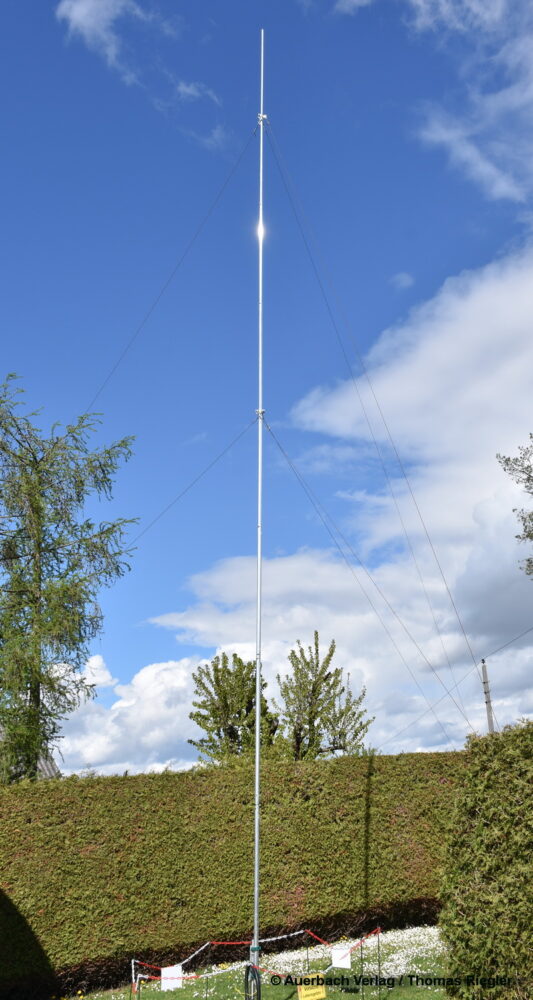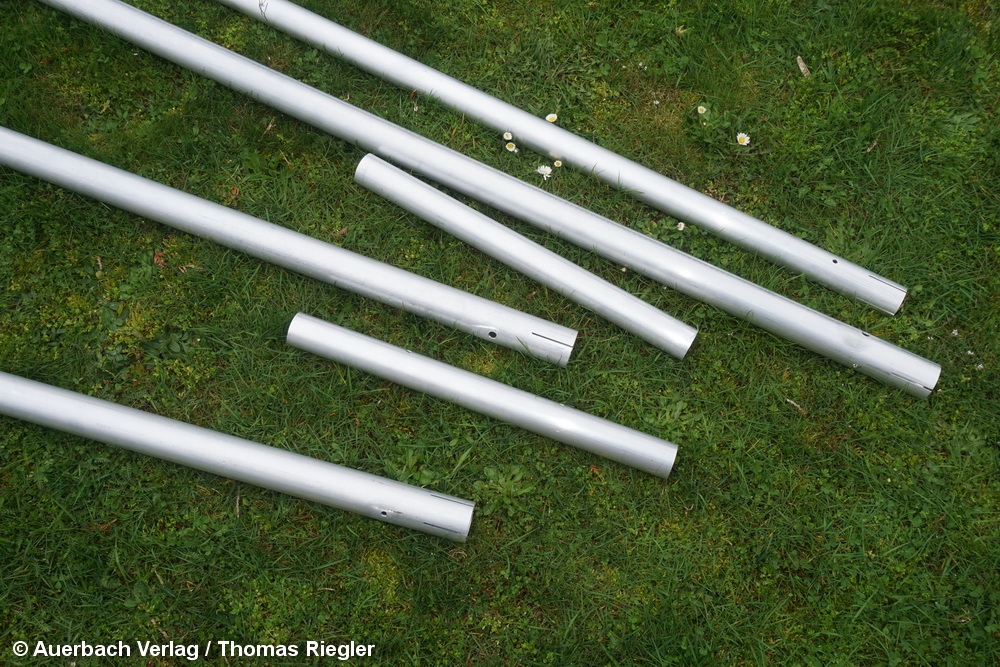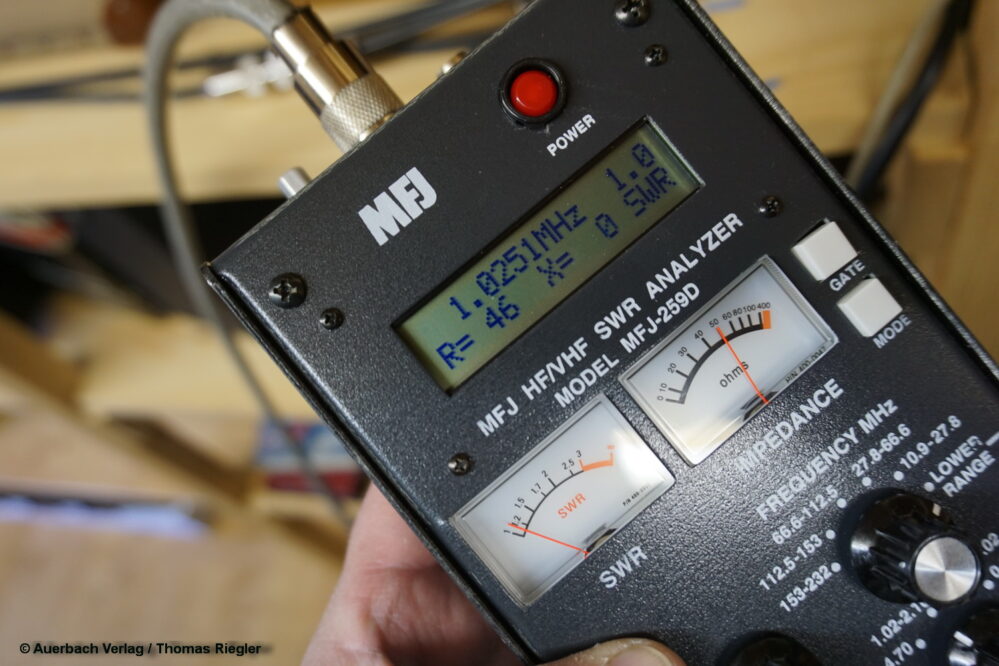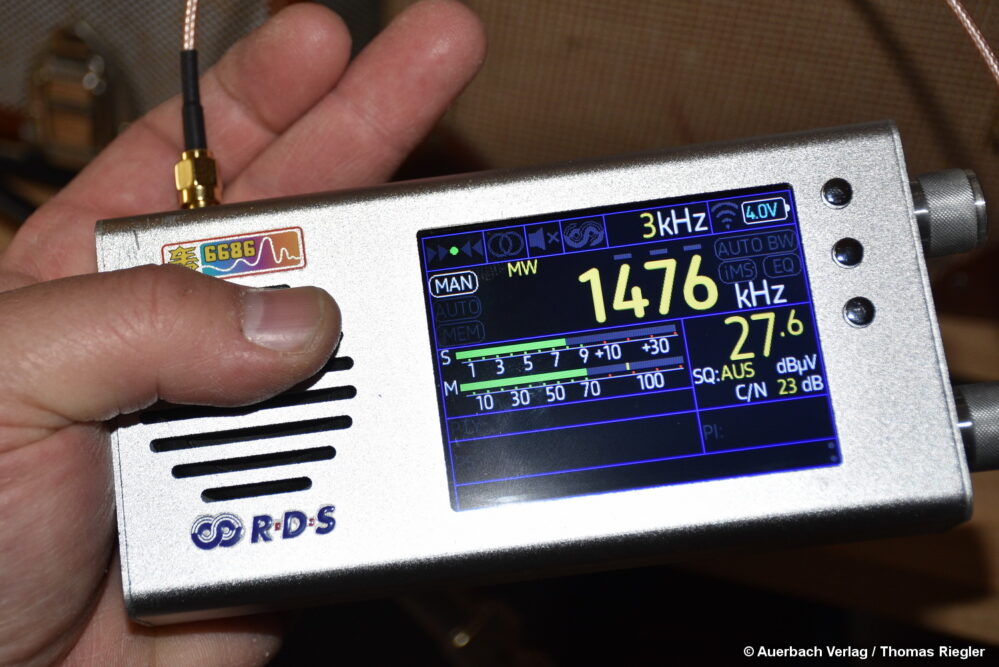We have already presented reception antennas for satellite, DVB-T2 and DAB+ several times. This time we are attempting an antenna for medium and short waves. And everything is different than what we were used to.
Some basics
While we are dealing with comparatively high frequencies on DAB+ and FM, these are quite low in the AM range, i.e. on long, medium and short waves. On shortwave in the range around 6,000 kHz, equal to 6 MHz, we are already dealing with a wavelength of around 49 m. That would also be the ideal antenna length. The situation is even worse on the medium wave in the range from 522 to 1602 kHz. Which corresponds to a wavelength of 500 to 200 m. This is also the reason why medium wave transmission masts, most of which have already been demolished in this country, were over 300 m high.

Amateur radio antennas
Such lengths cannot be achieved in a private setting. Nevertheless, some radio amateurs also have at least slightly higher masts. Their lengths range between roughly ten and almost 30 meters. They are not only transmitting but also receiving antennas and are therefore ideal for hunting waves with.


EDX13M antenna
We also set up a vertical antenna of the type EAntenna DX13M for reception experiments. It costs around 340 euros and consists of eight pipe segments with diameters between 50 and 25 mm. Its total length is 13.1 m. Its weight is 12.9 kg. The vertical antenna must be suspended on two levels, at around 7 and 11 m high. For this purpose, at least three ropes offset by 120 degrees must be tensioned. They are the only thing that gives the mast the necessary stability so that it does not collapse in wind and storms. Light mast, thin tubes. That doesn’t matter, you might think. But its area exposed to wind should not be underestimated. This is particularly noticeable when setting it up, when you have to hold the mast by hand while it is screwed and tensioned to the ground. The DX13M is designed for maximum wind speeds of up to 160 km/h.
What area is the antenna intended for?
It is intended for the frequency range from 160 m to 4 m wavelength. This corresponds to approximately 1,800 kHz to 75 MHz. However, these band boundaries should not be seen too narrowly. According to our experience, the DX13M also works quite well in the entire medium wave range, i.e. down to 522 kHz. Even in the VHF range, the antenna still cuts a fine figure.
There’s more to it than meets the eye
The 13 m long mast is only the visible part of the vertical antenna. It takes a lot more to make it work. First of all, this would be a foundation in which a 50 mm pipe is concreted into which the antenna is mounted. Such an antenna also needs its own, very good grounding. For this purpose alone, we buried 200 m of bare wire in a star-shaped pattern in the garden at a depth of around 20 cm. A 50 ohm antenna cable must also be laid to the receiving point.


On reception
In our reception tests, we mainly concentrated on the medium wave because it is actually already outside the band limits of the DX13M. However, our examples show that even here it still works surprisingly well.
The daily range of medium wave transmitters is limited to the so-called ground wave and, even with very powerful systems, they can only be heard within a radius of a maximum of a few hundred kilometers. Accordingly, at our test location near Linz in Upper Austria at midday we can only hear a single station, specifically the Hungarian Kossuth Radio from Solt on 540 kHz, at least usably with the original antenna of our radio. We can also faintly see the museum radio on 1,476 kHz from Bad Ischl, around 80 km away.
Connected to the large vertical antenna, reception improves noticeably and you are treated to quite rich audio. The 1,476 kHz is also a lot better. At least its signal strength increases from 10 to around 25 dBµV.


We also discovered four additional frequencies on the DX13M with sound that was still very noisy but already understandable. The Hungarian Danko Radio surprises us with quite good audio at 1,116 kHz. It can also be heard at 1,251 kHz. Nemzetisegi Adasok, also from Hungary, can be heard at 1,188 kHz with approximately the same quality. Finally, the 648 kHz brings us Radio Muski Val from Slovenia, which is quite weak.
We carried out our second series of tests at dusk. This is the time when the space wave gradually becomes effective on the medium wave and you can also hear more distant stations. With the telescopic antenna of our radio we were able to receive ten stations very well. In any case, there were 18 on the 13 m antenna. About ten more also almost fulfilled the criteria we set. In general, all stations that can be received on medium wave are received better with the large vertical antenna. However, since it receives equally well from all directions, potential disruptors cannot be blocked out with it. As a result, two or more stations can be received at the same time on many frequencies.
Even during the night, the DX13M has some advantages on medium wave. This makes it possible to record very distant stations surprisingly well, which would not be audible at all with standard medium wave antennas.
Also interesting:
Source: www.digitalfernsehen.de


